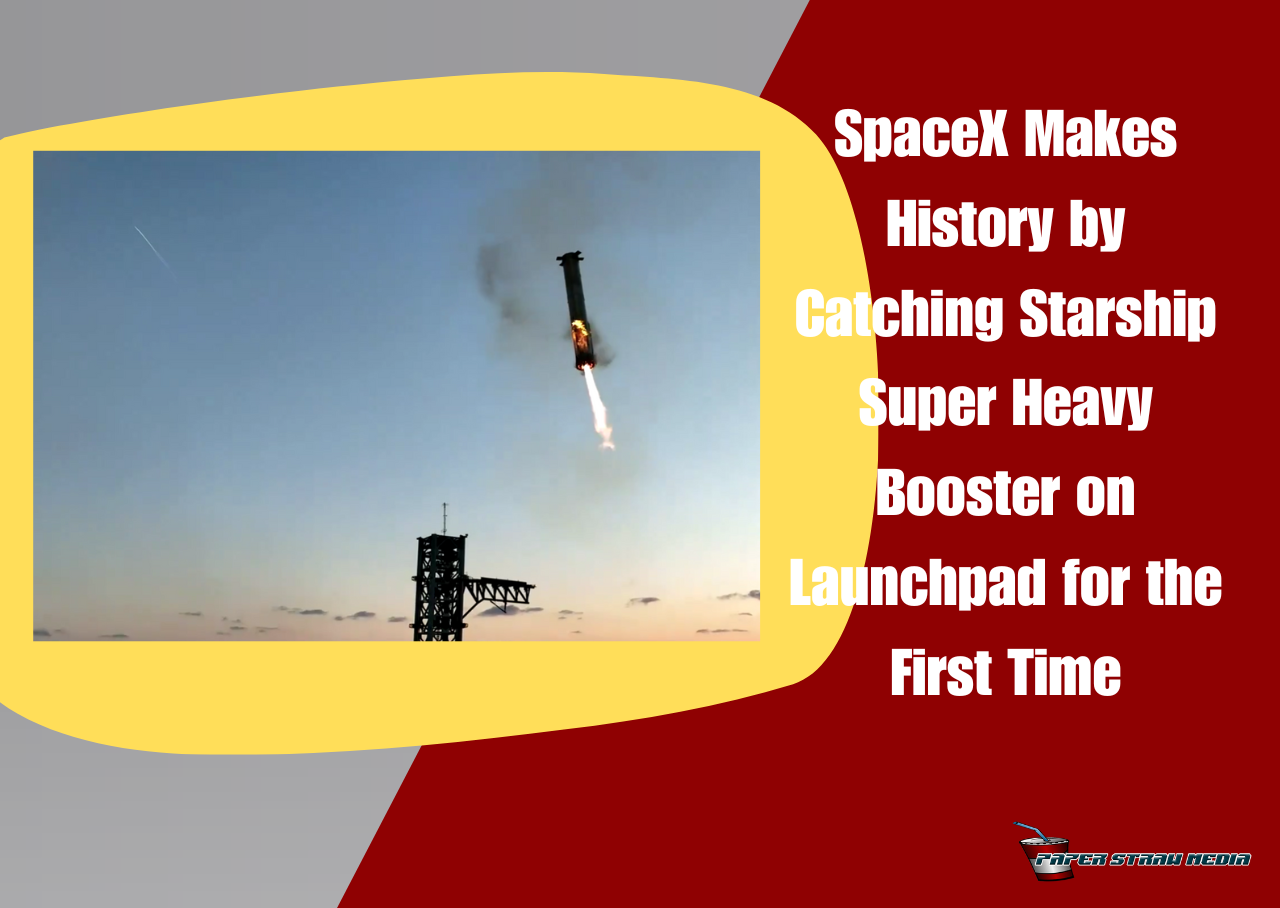
Double Soft Landing! SpaceX Successfully Conducts 5th Flight Test
SpaceX successfully landed the Super Heavy first-stage booster of its Starship rocket system in its first attempt on Sunday morning, US Central Time (Oct. 13), as part of the company’s fifth flight test for the vehicle.
Mechazilla has caught the Super Heavy booster! pic.twitter.com/6R5YatSVJX
— SpaceX (@SpaceX) October 13, 2024
In a video shared by the company on X (formerly Twitter), the Super Heavy booster, with the nomenclature Booster 12, was seen conducting its landing burn after launching from the same pad as it landed at SpaceX’s Starbase facility in Boca Chica, Texas.
Billionaire tech boss Elon Musk owns both SpaceX and X.
The Starbase launch pad’s chopstick arms, called internally by the company as “Mechazilla,” caught the booster as it landed, a development from the landing leg-assisted touchdown of its current workhorse, the Falcon 9.
Musk also retweeted the Super Heavy’s landing on the Mechazilla.
The tower has caught the rocket!!
pic.twitter.com/CPXsHJBdUh— Elon Musk (@elonmusk) October 13, 2024
Upper Stage Softly Lands on Water Mostly Intact
Meanwhile, the Starship upper stage, which the firm called Ship 30, successfully splashed down on the Indian Ocean after a planned suborbital trajectory. The landing was a significant development in the Starship’s design as the test spacecraft mostly survived reentry and softly landed in the ocean after the prototype for the previous flight test earlier this year, Ship 29, also did so, but the joints of the flaps burned off upon reentry, damaging the cameras that were supposed to monitor the status of the flaps while reentering Earth’s atmosphere.
Splashdown confirmed! Congratulations to the entire SpaceX team on an exciting fifth flight test of Starship! pic.twitter.com/FhCGznq9RO
— SpaceX (@SpaceX) October 13, 2024
Upon landing, Ship 30 was engulfed in flames and detonated, according to a camera attached to SpaceX’s target buoy. This is a testament to the craft’s survivability and accuracy.
Ship 30’s onboard camera views not only survived reentry but also provided crisp and clear videos of it via SpaceX’s Starlink constellation. Normally, plasma surrounds a spacecraft upon reentry, causing a three-to-five-minute communication blackout.
Whether Starlink would be used to track its current space vehicle’s reentry, the Dragon remains to be seen.
Congratulatory Surprise from Spaceflight Community
Several spaceflight content creators and other enthusiasts expressed their surprise and disbelief at what SpaceX achieved during the flight, including British Kerbal Space Program gamer Matt Lowne, US-based Scottish astrophysicist, pilot, and amateur DJ Scott Manley, and Australian spaceflight YouTuber Marcus House.
Several commercial space companies like Stoke Space and Blue Origin have congratulated SpaceX on the historic event.
Congratulations!
— Stoke Space (@stoke_space) October 13, 2024
Congratulations!
— Blue Origin (@blueorigin) October 13, 2024
A majority of the comments on SpaceX’s X account congratulated the company’s double soft landing. This feat has been elusive for the company since the first flight test in April 2023.
Inspiration4 and Polaris Dawn mission commander Jared Isaacman, who flew to space twice on SpaceX’s Crew Dragon, also praised the company for “[operating] on another level” in terms of Starship’s development as an interplanetary spacecraft of the future. It is understood that Isaacman funded at least three crewed Polaris missions, with the third projected to be flown on Starship.
Starship landing next to a data-gathering SpaceX buoy? If it wasn’t clear before today, @SpaceX truly operates on another level. Congrats to the entire team—you have given us yet another incredible glimpse into the future! https://t.co/29nnFOl4EQ
— Jared Isaacman (@rookisaacman) October 13, 2024
For the full coverage of the flight test, the replay of SpaceX’s flight test livestream is available below.
Watch Starship’s fifth flight test https://t.co/LVrCnTv797
— SpaceX (@SpaceX) October 12, 2024